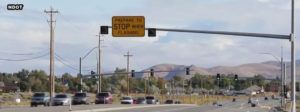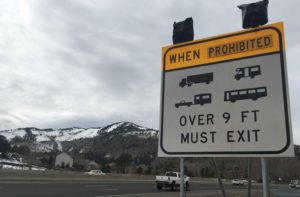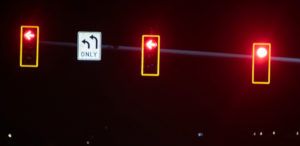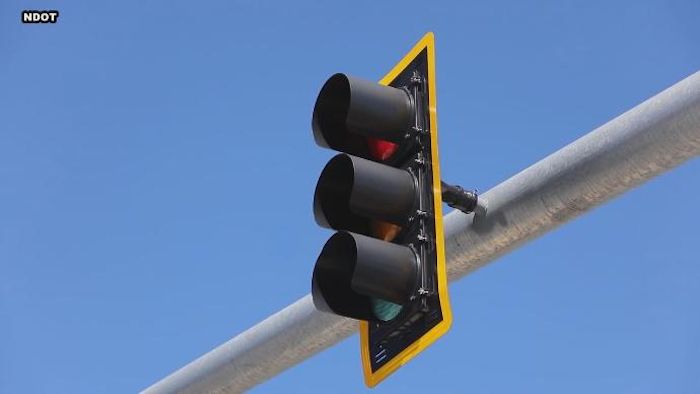The Nevada Department of Transportation (NDOT) is previewing three transport initiatives that it is introducing this year that it hopes will help keep drivers safer across the state.
Beginning in the summer, drivers will see changes to the flashing warning signals placed in advance of some traffic signals across the state. Known as advanced signal warning systems, the yellow signs stationed over the roadway often feature flashing yellow lights to draw attention to the traffic signal ahead. Some advance signals contain no flashing lights or lights which continuously flash. Other advance warning signs begin flashing when the traffic signal ahead readies to turn yellow and red, allowing drivers time to stop for the signal. This can lead drivers to unsafely speed up to ‘beat the light’, potentially leading to crashes.
NDOT conducted an engineering study to establish guidelines for most effective use of the different types of signal warning systems, compliant with federal guidelines. Following a thorough review, some of the advance signals will change from flashing with the oncoming yellow signal to a static sign or continuously-flashing signal beginning in the summer of 2020.
Six wind warning signs, three in each direction, will be installed on US 395 between Golden Valley and Bordertown in the summer. Lights on the advisory signs will flash when wind gusts reach 45mph (72km/h) or greater, notifying drivers of high-profile vehicles of nine feet (2.7m) or taller that travel through the area is not advised, and cautioning drivers of all other vehicles to reduce speeds. While similar to NDOT’s wind warning system in Washoe Valley, the North Valleys system will advise against, but not prohibit, high-profile vehicle travel.
 Traditional traffic signal backplates are a single black colour. New traffic signal backplates framed with a retroreflective yellow border are already in place at some intersections, and NDOT will install retroreflective backplates at approximately 150 additional intersections across the Truckee Meadows in early 2020. The yellow border provides a colour contrast to visually draw driver attention to follow the signal. Being retroreflective, the yellow border also further reflects light for enhanced visibility, particularly at night. During power outages, the further reflective illumination can also help lightly illuminate an otherwise dark signal to provide a visible cue to drivers. Studies have shown that the retroreflective backplates can reduce crashes by 15%.
Traditional traffic signal backplates are a single black colour. New traffic signal backplates framed with a retroreflective yellow border are already in place at some intersections, and NDOT will install retroreflective backplates at approximately 150 additional intersections across the Truckee Meadows in early 2020. The yellow border provides a colour contrast to visually draw driver attention to follow the signal. Being retroreflective, the yellow border also further reflects light for enhanced visibility, particularly at night. During power outages, the further reflective illumination can also help lightly illuminate an otherwise dark signal to provide a visible cue to drivers. Studies have shown that the retroreflective backplates can reduce crashes by 15%.





